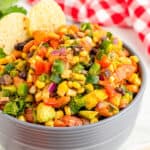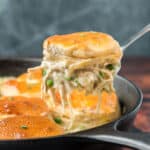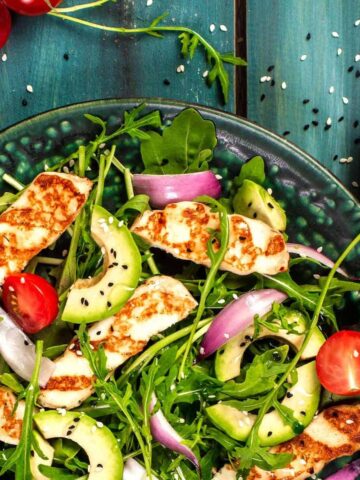
This post contains affiliate links, which means that I may make a commission on purchases and/or clicks (at no extra cost to you). Please read our full disclosure here.
A food processor is a kitchen appliance that is used to chop, dice, and slice foods. It can be a really handy tool to have in the kitchen, but what do you do if you don't have one? Don't worry - there are plenty of substitutes that you can use! In this blog post, we will discuss some of the best food processor substitutes for different tasks.
What Is A Food Processor?
A food processor is a kitchen appliance that can be used to chop, slice, and puree food. It typically has a large bowl and several different blades that can be attached to the base, making it a versatile tool for preparing food.
While many people use food processors to make salads and soups, they can also be used to make sauces, doughs, and even ice cream.
One of the main benefits of owning a food processor is that it can save you time in the kitchen since you can use a single device for many different tasks. Rather than having to chop vegetables by hand or mix ingredients together with a spoon, you can simply add them to the bowl of the food processor and let the machine do the work for you. This can be especially helpful when you are preparing dinner for a large group of people.
Whether you are an experienced cook or a beginner in the kitchen, a food processor is an appliance that can come in handy and speed up your food preparation.
Do You Need A Food Processor?
A food processor can be a useful kitchen appliance, but it is not essential for everyone. For those who enjoy cooking and spend a lot of time in the kitchen, a food processor can be a time-saving tool. It can quickly chop vegetables, grate cheese, and grind meat. It can also be used to make quick work of tasks like pureeing soup or making pesto sauce.
However, a food processor is not necessary for those who don't cook often or who prefer simpler meals. A good knife and a cutting board are all that are needed for most kitchen tasks.
For those who do choose to invest in a food processor, it is important to select one that is the right size and has the features that will be most useful. Otherwise, it will simply end up taking up space on the countertop.
The Best Food Processor Substitute: A Breakdown By Task
A food processor is a versatile kitchen appliance that can perform a variety of tasks, from chopping and slicing to shredding and pureeing. While a food processor is a convenient all-in-one solution for many cooking tasks, you might not have a food processor and there are also some instances where another kitchen tool may be a better option.
For instance, when making large quantities of shredded cheese or garlic, a box grater will be more efficient than a food processor. For tasks that require more precision, such as slicing herbs or nuts, a sharp knife is the best tool for the job. And for tasks that require delicate handling, such as whipping egg whites or cream, a handheld mixer or stand mixer is usually the best choice.
So while a food processor is a handy appliance to have in the kitchen, it's not always the best tool for every job. In some cases, it's best to stick with the tried-and-true methods that have been used in the kitchen for centuries.
Below, we're going to break down some common kitchen tasks and the best substitutes for a food processor.
1. Chopping Vegetables
One of the most common uses for a food processor is chopping vegetables. A food processor can quickly chop large quantities of vegetables with minimum effort, which can be helpful when you are preparing a meal for a large group of people.
If you don't have a food processor, you can still chop vegetables by hand. A sharp knife and a cutting board are all you need to chop most vegetables. For hard vegetables, such as carrots, raw potatoes, and celery, you can use a food chopper or mandoline slicer to make quick work of the task.
2. Shredding Cheese
A food processor can also be used to shred cheese. This is a convenient way to shred large quantities of cheese at once.
If you don't have a food processor, you can use a box grater to shred cheese. Large graters are more efficient than a food processor for this task and it will also give you finer shreds of cheese.
You can also use a sharp knife to shred cheese, but this will take more time and effort than using a box grater.
3. Grinding Meat
A food processor can be used to grind meat. This is a convenient way to grind large quantities of meat at once.
If you don't have a food processor, a meat grinder or a food chopper are the best ways to grind meat. A meat grinder will give you a finer grind than a food chopper, but both appliances will get the job done.
You can also use a sharp knife to grind meat, but this will take more time and effort than using a meat grinder or food chopper.
4. Pureeing Soup
A food processor can be used to make smooth purees. This is a convenient way to make smooth, creamy soup without any lumps.
If you don't have a food processor, you can use an immersion blender to puree soup. An immersion blender is a handheld appliance that can be used to blend soup right in the pot. This is a convenient way to make smooth, creamy soup without any lumps.
You can also use a regular blender to puree soup, but you will need to transfer the soup to a blender and then back to the pot. This extra step can be messy and inconvenient.
5. Slicing Fruit

A food processor can be used to slice fruit. This is a convenient way to slice large quantities of fruit at once.
If you don't have a food processor, you can use a sharp knife to slice fruit. A sharp knife is the best tool for this job and it will give you more control over the thickness of the slices.
You can also use a food chopper or a mandoline slicer to slice fruit, but these appliances will give you thinner slices than a sharp knife.
6. Dicing Vegetables
A food processor can be used to dice vegetables. This is a convenient way to dice large quantities of vegetables at once.
If you don't have a food processor, a simple chef’s knife and chopping board is the next best thing and can often do the job just as well – and with less cleanup.
To dice a vegetable, first cut it into thick slices. Then, stack the slices and cut them into thin strips. Finally, cut the strips into small cubes.
This technique may take a little longer than using a food processor, but it will give you more control over the final result. Plus, there’s no need to lug out the heavy machine – and deal with all those extra blades – when a knife will do the trick.
7. Mixing Dough
A food processor can be used to mix dough. This is a convenient way to mix large quantities of dough at once.
If you don't have a food processor, a stand mixer is the best option to mix dough. A stand mixer is more powerful than a food processor and it will give you a more consistent dough.
You can also use a hand mixer to mix dough, but this will take more time and effort than using a stand mixer.
8. Kneading Dough
In addition to mixing dough, a food processor can also be used for the process of kneading dough. Kneading dough is an essential step in baking bread, but it can be a tough process, especially if you don't have a food processor.
The best alternative is to knead the bread dough by hand. It may take a little longer, but it's worth it. The key is to be patient and to use a light touch.
Start by flouring your work surface and then shape the dough into a rough ball. Next, use the heel of your hand to push the dough away from you. Fold it over, and turn it a quarter turn. Repeat this process until the dough is smooth and elastic. Then, cover the dough and let it rest for at least 30 minutes before shaping it into loaves or rolls.
With a little practice, you'll be able to knead dough like a pro.
If kneading dough by hand seems like too much work, another good alternative that requires less effort is to use a stand mixer with a dough hook attachment. Just make sure that your mixer has a powerful motor if you plan to knead dough.
9. Blending Smoothies And Sauces

A food processor can be used to blend smoothies, sauces, and salad dressings. This is a convenient way to make smooth, creamy smoothies and sauces without any lumps.
If you don't have a food processor, the best substitute to make smoothies and sauces is a regular high speed blender. A regular blender is an effective alternative and will give you a smoother, more consistent smoothie or sauce than a food processor.
You can also use an immersion blender to blend smoothies and sauces. An immersion blender is a handheld appliance that can be used to blend smoothies and sauces right in the pot. This is a convenient way to make smoothies and sauces without any lumps.
10. Grinding Coffee, Nuts, Or Spices
A food processor can be used to grind coffee, nuts, or spices. This is a convenient way to grind large quantities of coffee, nuts, or spices at once.
If you don't have a food processor, you can use a coffee grinder instead. A coffee grinder is an excellent alternative and is more powerful than a food processor so it will give you a more consistent grind. While most people only think of using a coffee grinder for grinding coffee beans, it's actually a super versatile little appliance that can be used to grind a lot of different ingredients - nuts and spices included.
You can also use a mortar and pestle to grind coffee, nuts, or spices. This is a convenient way to make small batches of ground coffee, nuts, or spices without any lumps and with minimal clean-up.
11. Crushing Biscuits Or Cookies
A food processor can be used to crush biscuits or cookies. This is a convenient way to make crumbs for toppings, fillings, or cheesecake crusts.
If you don't have a food processor, a rolling pin is a great food processor alternative for crushing biscuits or cookies. Place the biscuits or cookies in a plastic bag and then use a rolling pin to crush them into crumbs.
You can also use a food mill to grind biscuits or cookies into crumbs. A food mill is a handheld appliance that has a grater attachment. It's the perfect tool for grinding biscuits or cookies into crumbs.
12. Making Mashed Potatoes
A food processor can be used to make mashed potatoes. This is a convenient way to make smooth, creamy mashed potatoes without any lumps.
If you don't have a food processor, you can use a potato masher or potato ricer to make mashed potatoes. A potato masher is a handheld tool that is used to mash cooked potatoes. It's the perfect tool for making smooth, creamy mashed potatoes without any lumps.
A potato ricer is a handheld tool that is used to press cooked potatoes through a screen. It's a good option for making light and fluffy mashed potatoes.
13. Mixing Cake Batter
A food processor can be used to mix cake and cupcake batter. This is a convenient way to make smooth, lump-free cake batters for a variety of baked goods.
If you don't have a food processor, you can use an electric mixer or hand blender to mix cake batter and get similar results. An electric mixer will give you a smooth, lump-free cake batter. A hand blender will also give you a smooth, lump-free cake batter, but it will take a little longer to mix the batter.
You can also use a whisk to mix cake batter if you don't have a stand mixer or hand blender.
Final Thoughts
So there you have it – the best food processor alternatives for different kitchen tasks. With a little creativity, you can still make all your favorite recipes without a food processor. So don't let not having a food processor stop you from making delicious meals! Get in the kitchen and get cooking!
More Recipes You Might Like


















Leave a Reply